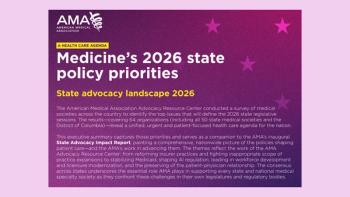
ACC/AHA risk calculator warrants cautious use
“Major limitations undermine the clinical utility” of the risk score calculator, said Steven E. Nissen, MD, at the 2016 AHA Conference.
Although well intentioned, the American College of Cardiology/American Heart Association (ACC/AHA) Pooled Cohort Risk Equation for atherosclerotic cardiovascular disease (ASCVD) events in ethnically diverse populations has major limitations and should be used cautiously.
That was the message from Steven E. Nissen, MD, chair of the department of medicine at the Cleveland Clinic, during his presentation, “Risky Business: Challenges Using the ACC/AHA Risk Score,” delivered at the American Heart Association (AHA) Scientific Sessions in New Orleans.
“There are major limitations that undermine the clinical utility of this calculator that must be considered by clinicians to avoid unintended consequences,” he said.
Among the key limitations is that the risk calculator guideline is miscalibrated and leads to a large discordance from observed risk. “The current risk calculator overestimates future event rates by a large margin,” said Nissen, citing data from a 2016 study published in the Journal of the American College of Cardiology showing that the ACC/AHA Pooled Cohort Risk Equation substantially overestimated the actual five-year risk of ASCVD in a large “real-world” population of adults without diabetes, regardless of sociodemographic factors.
Nissen also cited similar results from a 2015 study published in the Annals of Internal Medicine that showed an overestimation of ASCVD risk of up to 115% in a multiethnic cohort of patients without clinical ASCVD when using the ACC/AHA calculator.
Nissen said the study also showed that the Reynolds Risk Score appeared to be the better predictor of future ASCVD risk and “may represent a useful alternative.” The study found a discordance of -3% between the predicted versus observed risk of ASCVD (7.4% vs 7.6%, respectively) when using the Reynolds Risk Score, compared to a discordance of 78% (9.2% vs 5.2%) when using the ACC/AHA calculator. This was true for both men and women.
Another limitation of the calculator Nissen discussed was the way in which the tool was vetted for clinical use. He emphasized that introducing a new risk tool without prior publication prevented sufficient testing of the tool to identify issues in advance of its release.
“Future iterations of the guidelines should publish any risk score prior to release to allow independent testing and validation,” he said, adding that these concerns “represent an opportunity to learn lessons for improving future versions of the guidelines.”
Given these limitations, Nissen said that the best use of the current tool is for beginning the conversation with patients about shared decision-making.
Newsletter
Stay informed and empowered with Medical Economics enewsletter, delivering expert insights, financial strategies, practice management tips and technology trends — tailored for today’s physicians.








